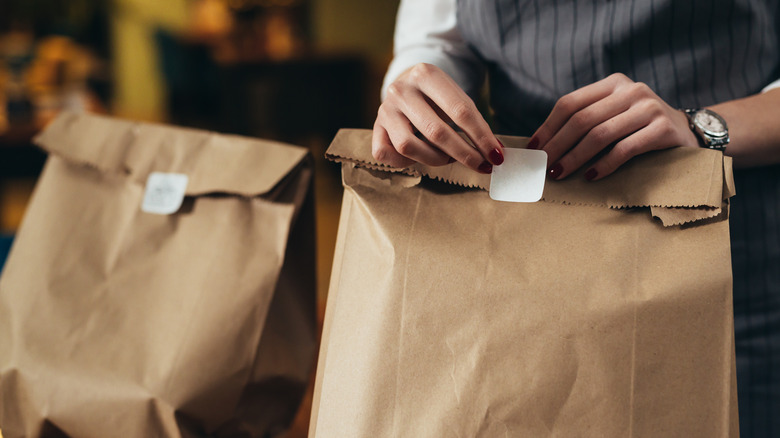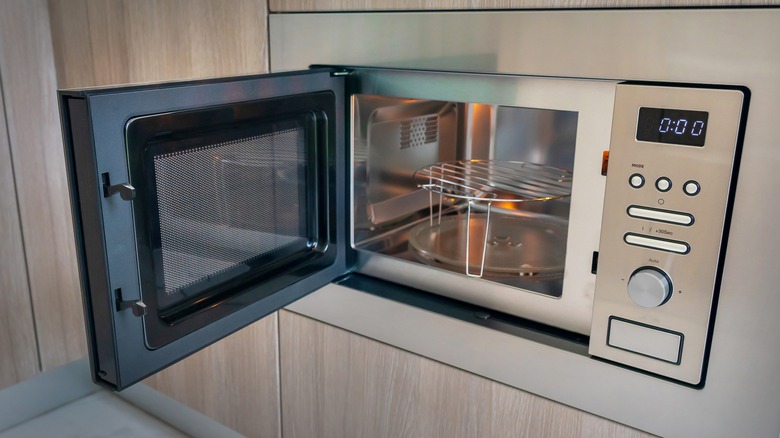The Heating Leftovers Rule You Should Always Follow
Leftovers are the gift that keeps on giving. They spread your meal out into two days to help you save money, provide a late-night snack, and bring joy when you get to eat your favorite meal more than once in a week. According to Yahoo! Sports, a survey conducted by OnePoll revealed that soup is the favorite leftover of 79% of responders. Of all the reasons to consume leftovers, 32% say they're more affordable than buying a new meal, and 46% say they'd rather reheat previous night's dinner than cook a new one. In general, 72% of Americans are fans of having leftover food.
It doesn't take much of an effort for American diners to have leftovers after eating at a restaurant. A 2016 study at the Jean Mayer USDA Human Nutrition Research Center found that portions are oversized in 92% of United States' restaurants. To conduct their research, they examined food at more than 120 eateries, only focusing on the main entrée without even considering the folks who add appetizers and desserts to their meals. This study revealed that one meal at a restaurant contains more calories than what the average American should consume in one day.
That's another benefit of leftovers; you don't have to eat the entire meal in a day. Everything about this concept sounds like a home run, until you consider just how difficult it is to reheat restaurant food to perfection. However, this microwave trick makes evenly reheating leftovers easy.
Microwaves are more efficient than you think
Odds are you might've been using your microwave wrong all this time. When heating something in a microwave, you likely pop it in, push a few buttons, and shut the door, right? But if you want your leftovers to taste as fresh as day one, you'll actually want to learn how to adjust more than just your microwave's timer, according to Cook Anyday. Apparently, heating your leftovers at a slower, gentler rate yields better results. The trick is in the power levels, which — when used properly — shuts off the microwave for a short period to allow leftover heat in the chamber to do the work rather than actual heat from the appliance. To utilize residual heat and direct heat in a half-and-half fashion, you should set your microwave to power level five.
Per Whirlpool, power levels should be adjusted considering what food is being prepared. For ham and stew, opt for 50%. To defrost food and melt butter, consider 20%. And to prepare rice and pasta, crank the power level up to 80%. If you're looking to maintain your food's moisture level as it reheats, Food Network recommends adding a bit of water to your dish or integrating steam by covering your food with a wet towel.

